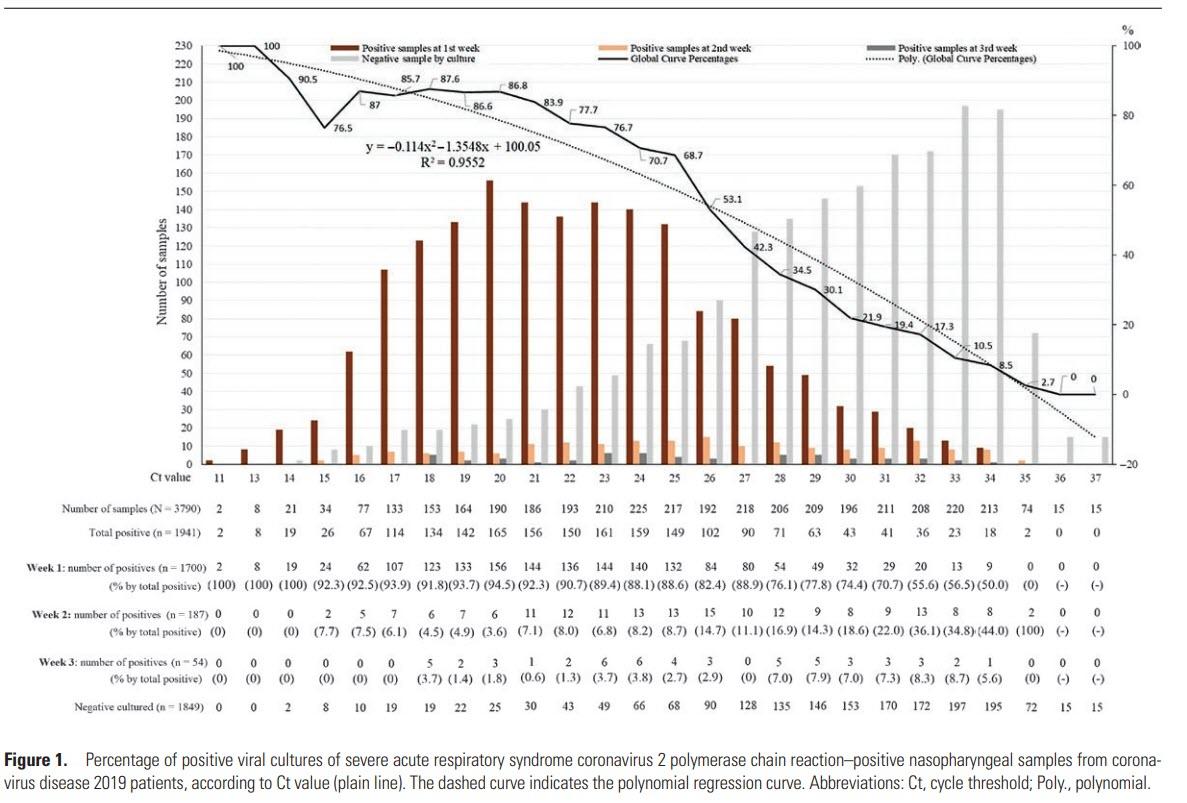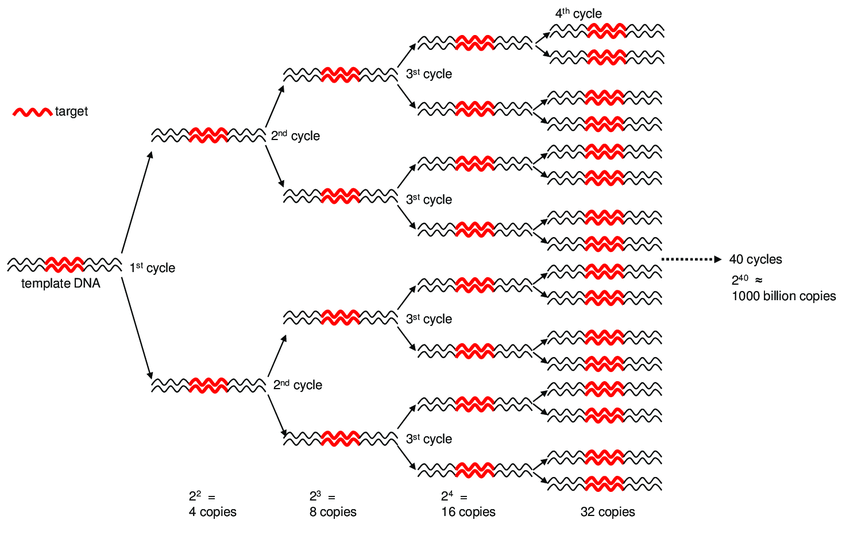Javier Kaulaity (Kiowa): Aye'gaw'pehn'kee'tso'aye (braised buffalo) with aye'gkoon (masa polenta) and savory pumpkin
Braised buffalo
4 1/2 pounds bison whole rib eye roast (or as a substitution, beef chuck roast)
Olive oil for browning the meat
1 1/2 onions, chopped
3 cups beef broth
2 cups water
4 tablespoons New Mexico chile powder
1 tablespoon cumin
1 tablespoon oregano
1 tablespoon rosemary
2 tablespoons paprika
3 tablespoons salt
2 tablespoons black pepper, ground or whole peppercorns
10 garlic cloves
Preheat the oven to 350° or your preferred temperature for braising. Cut the bison (or beef) into large chunks. You may ask your butcher to do this!
Heat olive oil in a skillet over high heat and brown the bison chunks. Then remove them and set them aside. Sauté the onions in the same skillet until they are fully cooked (translucent).
Using a Dutch oven, begin placing all the ingredients together, adding the meat, onions, broth, and water, then stirring in the herbs and spices. Place the pot onto the cooktop and bring it to a boil, then cover it and place in the oven at 350 to 375° for 2 hours or until the meat is fully cooked and tender enough to pull apart with a fork.
Remove the meat. Strain the braising liquid through cheesecloth to create a nice smooth sauce and set 1 cup aside for the masa polenta. If the sauce has reduced a little too much, add more water and beef stock.
Note: If you don’t have a Dutch oven you can always substitute a large, heavy casserole dish covered with aluminum foil. Bake longer and at a lower temperature—270° for 5 hours. The buffalo will come out still yummy and deliciously succulent
Masa polenta
2 cups masa or corn meal
Water (see instructions)
1/2 cup yellow onion, diced
1/2 cup red bell peppers, diced
1 or 2 cloves garlic, minced
Salt and pepper to taste
4 tablespoons butter
1/4 cup grated Parmesan cheese
Note: For firm polenta use 3 1/2 cups water; for soft polenta use 4 3/4 cups water.
Using a large skillet over medium high heat, begin sautéing the onions. Add the red bell peppers. When the onions become translucent and the peppers begin to soften, add the garlic and continue to sauté, mixing the vegetables.
Add water and braised bison (or beef) renderings. Bring to a simmer or light boil. Add salt and pepper. The broth renderings are already seasoned, so be careful not to over-salt.
Pour masa slowly into the water, stirring with a wire whisk. Continue stirring as the mixture thickens, 2 to 3 minutes.
Turn heat to low and cook for at least 25 minutes, stirring every 5 or 6 minutes. When the masa polenta is thickened to your preference, stir in the parmesan. If the polenta becomes too thick, thin it with more water or broth, stir well, and continue cooking. Add up to 1 cup more water as necessary, to keep polenta soft enough to stir.
Put a spoonful on a plate, let it cool, then taste. Make sure are the grains of masa are smooth, like the texture you’d taste in a tamale. Add salt and pepper to taste.
For firm masa polenta, use the smaller measure of the water. Pour the cooked polenta into a square baking dish. Smooth it, let it cool, and cut it into squares; or use a biscuit cutter or plastic cup to cut it into circles. Heat butter in a sauté pan and give your polenta shapes a quick sear on both sides until golden brown!
Savory pumpkin
1 small pumpkin or large butternut squash, peeled cut and diced in 1-inch cubes, then rinsed
6 green onion stalks about 2 inches long, cleaned and without roots, chopped long ways into ruffles
1/2 cup red bell peppers, chopped and diced
1/2 cup red onion, chopped and diced
4 tablespoons butter
2 teaspoons olive oil
2 teaspoons salt
Freshly ground pepper, about 4 turns
1 teaspoon cinnamon
3 tablespoons brown sugar, optional (you may also use honey)
2 garlic cloves, minced
1/3 cup water
Prepare the pumpkin and other vegetables.
In a skillet over medium high heat, melt the oil and butter. Add diced onions, ruffly chopped green onions, red bell peppers, and garlic and sauté, stirring constantly. Add the rinsed cubed pumpkin pieces and sauté, flipping the pumpkin over as you add salt, pepper, and cinnamon.
Add water, bring to a simmer, and reduce heat. When the pumpkin is cooked al dente, add brown sugar and continue to simmer until a light syrup forms and pumpkin softens. Let cool.
This gives the dish an amazing sweet and savory flavor that'll make this dish pop and have your family raving in awe. Or perhaps awwwww. You may also fry bacon with the onion and red bell pepper mixture for big added flavor! Left: Chef Clayton Jones’s turkey green chili tamale pie with roasted winter squash and pinto beans. Right: Chef Justin Pioche’s blue corn stuffing. (Left: Courtesy of Clayton Jones. Right: Courtesy of Justin Pioche and Tia Pioche, Pioche Food Group LLC)
Left: Chef Clayton Jones’s turkey green chili tamale pie with roasted winter squash and pinto beans. Right: Chef Justin Pioche’s blue corn stuffing. (Left: Courtesy of Clayton Jones. Right: Courtesy of Justin Pioche and Tia Pioche, Pioche Food Group LLC)
Clayton Jones (Kaw and Otoe): Turkey green chili tamale pie with roasted winter squash and pinto beans
Turkey green chili tamale pie
4 pounds turkey thighs
2 quarts (64 ounces) chicken stock
1 bay leaf
1 yellow onion, diced large
6 to 8 roasted green chilis, diced
1 tablespoon whole cumin seed, toasted and ground
1 tablespoon Mexican oregano
½ bunch cilantro
1 tablespoon Kosher salt
4 dried guajillo chilies, toasted
4 cups tamale dough
Season the turkey thighs with salt, pepper, half of the cumin, and half of the Mexican oregano. In a Dutch oven over medium high heat, sear the turkey thighs on all sides. Add the onion and sauté until translucent. Add the chicken stock and the remaining ingredients.
Reduce the heat to low, cover with a lid, and braise for 1½ hours or until the turkey yields easily to a fork.
Preheat the oven to 350°.
Remove the turkey with a slotted spoon and reserve the broth. Remove any skin, bone, or cartilage from the turkey and shred the meat lightly; reserve.
Reduce the remaining liquid by half to three-quarters, depending on your tastes. Mix the reduced liquid and roasted green chilis with the turkey meat and season with salt as needed.
Place the braised, seasoned turkey meat into an 8- or 10-inch round pie pan. (The pan should fit in a larger pan to bake in a water bath.) Spread the tamale dough evenly over the top of turkey and wrap the pie pan tightly with aluminum foil. Bake in a water bath at 350° for 1½ hours or until the tamale dough is done.
Serve hot with roasted winter squash, pinto beans, and your favorite enchilada sauce.
Roasted winter squash
1 or 2 winter squashes, such as acorn, butternut, or spaghetti
¼ cup olive oil
2 tablespoons salt
Preheat the oven to 350°.
Cut the squash in half lengthwise and remove the seeds. Coat the squash liberally with the olive oil and place it flesh-side-down in a small sheet pan. Coat the outside of the squash with the salt.
Bake at 350° for 45 minutes or until tender to the touch. Cool and reserve.
Pinto bean purée
2 pounds pinto beans, cooked until tender
1 yellow onion, diced small
1 tablespoon whole cumin seed, toasted and ground
1 tablespoon Mexican oregano
2 tablespoons bacon fat
2 dried guajillo chilies, toasted
4 to 6 cups chicken stock
Melt the bacon fat over medium heat and sauté the diced onions until the edges begin to brown. Add the cooked pinto beans, mix thoroughly, and fry briefly.
Add the chicken stock and remaining ingredients. Cook until the beans begin to fall apart.
Remove the dried chilies before using an immersion blender or hand masher to puree the beans. Season to taste with salt and pepper.
Justin Pioche (Navajo): Blue corn stuffing
4 ounces White Earth wild rice (cooked)
10 ounces Bow and Arrow blue corn meal
5.7 grams (1 teaspoon) Tesuque Farms cayenne pepper
1 ounce (1/8 cup) Seka Hills extra virgin olive oil
2 ounces carrots, diced small
2 ounces celery, diced small
3 ounces onions, diced small
1 large clove garlic
1.5 ounces pine nuts, toasted
8 ounces (1 cup) cranberries, fresh
32 ounces (4 cups) organic chicken stock
63g (3 tablespoons) kosher salt (plus extra to taste)
Optional: Celery leaves, fresh cranberries, and chopped parsley if desired
Heat a pot over medium heat until hot, then add oil. Add carrots first and cook for 5 minutes, then celery for 5 minutes, and last the onions and garlic for 5 minutes or until translucent. Add a good pinch of salt to flavor the vegetables.
Add chicken stock and bring to a rolling boil. Slowly whisk in blue corn meal. Continue to whisk vigorously as this will thicken up quickly. Whisk until there are no clumps.
Add the remaining ingredients and mix well. Taste and add a little more salt if needed.
Garnish with celery leaves, fresh cranberries, and chopped parsley if desired.
Enjoy! Left: Chef Elena Terry’s sweet berry wild rice. Right: Chef Brian Pekah’s Comanche-style corn. (Left: Courtesy of Elena Terry, Wild Bearies. Right: courtesy of Brian Pekah))
Left: Chef Elena Terry’s sweet berry wild rice. Right: Chef Brian Pekah’s Comanche-style corn. (Left: Courtesy of Elena Terry, Wild Bearies. Right: courtesy of Brian Pekah))
Elena Terry (Ho-Chunk): Sweet berry wild rice
1 ½ cups cooked and cooled wild rice. Prepare the wild rice following the instructions on the package, as cooking times will vary.
½ small buttercup squash. (Acorn squash is also fine.)
¼ cup plus 2 tablespoons pure maple syrup
½ cup sliced strawberries
½ cup fresh blueberries, plus ¼ cup set aside for garnish
½ cup fresh cranberries
1 cup water
1 tablespoon coarsely chopped pumpkin seeds
¼ teaspoon pie spice
Pinch of salt
Note: You may substitute frozen berries instead of fresh.
Preheat oven to 350 degrees.
Peel and slice buttercup squash into quarter-inch cubes. Toss the squash cubes in 2 tablespoons of maple syrup. Place on a parchment-lined cookie sheet.
Bake until soft, about 15 to 20 minutes.
In a small saucepan, combine berries (reserving ¼ cup of blueberries), remaining maple syrup, water, pie spice, and a pinch of salt, and bring to boil. Reduce heat to low and let simmer until reduced.
Mix berry sauce with wild rice. Add roasted squash and reserved blueberries and mix gently until combined. Sprinkle pumpkin seeds on top.
Brian Pekah (Comanche): Comanche-style corn
When most historians reflect on Comanche history, they refer often to our bravery, horsemanship, and warcraft. Not many attribute the success of our great nation to our relationship with food. Our traditional food preparation techniques played a significant role in our success as a nation.
Comanches were traditionally nomadic in nature. After our split from the Shoshone in the early 1700s, we followed the buffalo herds into what the Spanish referred to as the Comancheria. This vast territory stretched from western New Mexico to eastern Oklahoma and from southern Colorado to northern Mexico. The Spanish were amazed by how Comanche people could travel vast distances without stopping to replenish food supplies. Comanche people were very resourceful, using every part of the animal. Three core cooking/preparation principles aided in tour ability to move as we did.
Ku?i?naru: When Comanche groups stopped to rest, they would dig holes in the ground. The size of these holes would vary, but the average depth would be approximately three feet. Rocks would be placed on the sides and a fire built in the middle. Rocks that served a specific purpose would often be reused. Fresh meat could then be cooked on the rocks. The depth of the pit hid the fire, allowing the camps to remain concealed.
Ta?oo (powdered dried meat): Dehydrated meat ground into a powder with a rock pestle and mortar was a critical meat preservation method. A small pouch of ta?oo could provide a warrior protein for days or weeks at a time. Oftentimes a pinch of ta?oo would be placed between the teeth and cheeks and held there to fight food cravings.
Atakwusu (dried corn) provided starch and carbohydrates for journeys. By combining it with ta?oo and water, a hot meal could be prepared quickly. Comanches were not farmers, so we would often trade or raid to gain this valuable commodity.
Thanksgiving is a European concept. To be thankful on this one day is foreign to Comanche people. We are thankful any time we can gather with family and friends. Our meals are often graced with a blessing thanking the Creator for all he has provided. We should be thankful for each day we have here on this earth.
Comanche-style corn (modern recipe)
2 pounds bone-in buffalo (or beef) ribs, cut in cross segments
1 cup wild onion, half julienned or diced small
4 cups dried corn
Water
Preheat a stock pot and add the rib segments to braise. Once fat from ribs starts to form in the bottom of the pot, add the wild onion and cook until softened. Use a small amount of water (about 1 cup) to deglaze the pan.
Add the dried corn. Add enough water to cover the corn mixture by approximately 1 inch. Bring to a boil, then reduce to a simmer. Stir occasionally and add water when needed.
Yields 6 to 8 servings (3 to 4 Comanche servings). My elders consider bone marrow a delicacy. The boiled rib bones would be cracked once cooked and the marrow consumed.
Comanche-style corn (traditional preparation)
2 parts dehydrated bison meat, ground into a powder
1 handful wild onion, sliced thin
2 parts dried corn
Water enough to cover corn to the second finger segment.
Cook all ingredients in a rawhide pot until tender.
Numu Atakwasʉ Kuʔinarʉ
Wahatʉ nakooʔipʉ̠ha nʉmʉ kutsu taʔoo
Sʉmʉ moʔobekatʉ kʉʉka (ma hʉnʉkooʔi)
Wahatʉ nakooʔipʉ̠ha kukʉmepʉ̠
Paa (tʉtsituka tʉbinaawekiti pawʉ̠saʔnai)
Paaki saawhi tuakupa ma noyaikʉ̠.
Kukʉmepʉ̠ tsa yʉʔyʉkaruʔi.
Subetʉ ma. Left: Chef Monie Horsechief’s national championship-winning frybread. Right: Chef Anthony Warrior’s Siwinoa blue corn pumpkin bread with cranberry compote and sweet corn maple ice cream. (Left: Courtesy of Monie Horsechief, Wild Bearies. Right: Courtesy of Anthony Warrior)
Left: Chef Monie Horsechief’s national championship-winning frybread. Right: Chef Anthony Warrior’s Siwinoa blue corn pumpkin bread with cranberry compote and sweet corn maple ice cream. (Left: Courtesy of Monie Horsechief, Wild Bearies. Right: Courtesy of Anthony Warrior)
Monie Horsechief (Pawnee): National championship-winning frybread
4 cups all-purpose flour
1 teaspoon salt
1 tablespoon baking powder
1 tablespoon sugar
1 ½ to 2 cups warm water (110 degrees F/45 degrees C)
Vegetable oil for frying
Combine flour, salt, baking powder, and sugar in mixing bowl. Stir in 11/2 cups lukewarm water and knead by hand until the consistency is sticky, mixing well to ensure a smooth consistency with no lumps. You may need to add more water, a little at a time.
Lightly sprinkle dough with a dusting of flour and let it rise. Cover with plastic wrap and let rest for at least 30 to 45 minutes.
Lightly dust working table with flour. Reserve flour to keep your hands from sticking to the dough.
Gently pinch off dough balls about 3 inches in diameter and lay each ball on the lightly floured work table. Using your floured hands, softly flatten and form balls into circular patties 1/2 inch thick.
In a heavy skillet, heat 2 inches of cooking oil to 350 degrees for frying. Gently drop flattened and formed dough into the hot oil. Watch closely for the frybread to brown. Turn after approximately 2 minutes on each side, depending on the size of your frybread.
Remove and drain on paper towels.
Frybread is excellent served with traditional foods, stews, and soups, and even integrated into desserts.
Anthony Warrior (Absentee Shawnee and Mvskoke Creek): Siwinoa blue corn pumpkin bread with cranberry compote and sweet corn maple ice cream
Milise ti’me (sweet corn) ice cream (vegan)
2 13- to 15-ounce cans of full-fat coconut milk
1 ear of fresh sweet corn taken off the cob and coarsely crushed
1/2 cup maple syrup
1/4 teaspoon salt
¼ teaspoon cinnamon
2 tablespoons cornstarch or 1 tablespoon arrowroot starch
1 1/2 teaspoons vanilla extract
In a heavy bottom sauce pan, heat coconut milk and add in crushed corn. Allow to come up to a simmer, but do not boil. Let simmer 5 minutes.
Strain the coconut milk and return it to the sauce pan. Stir in maple syrup, salt, cinnamon, and vanilla extract.
Once the mixture is smooth, make a slurry of cornstarch and a little water and add it to the mixture. Allow the mixture to thicken until it is the consistency of pudding.
Remove, cool, then freeze in an ice cream maker. Store frozen until ready to use.
S’kepukeyi’nini wipeko (pumpkin blue corn bread)
1 medium Indian field pumpkin or butternut squash
Olive oil to brush pumpkin
2 cups blue corn Meal or white corn meal (masa)
3 tablespoons real maple syrup
1 cup and ½ cup hot water for pumpkin dough
2 cups of water for the juice bath
2 cups of cranberry juice
Preheat oven to 375 degrees.
Peel and seed the pumpkin or squash. Brush it lightly with olive oil and roast. The pumpkin will be ready when you can insert a knife into it with ease.
Scoop the warm pumpkin flesh into a mixing bowl. Add maple syrup and blue corn meal or masa, then add 1 cup of hot water. Mix together until the pumpkin-cornmeal mixture is the consistency of biscuit dough. Add an additional ½ cup water if the mixture seems too dry.
Allow to set for 20 minutes until the corn meal hydrates and you can form it into soft disks.
In a stainless steel skillet on low medium heat, mix 2 cups of water and 2 cups of cranberry juice. Allow to come to a simmer, then gently add the pumpkin cakes.
Cook on each side for 8 to 10 minutes, gently turn, and simmer for another 5 minutes.
Remove and make cranberry compote, reusing the cranberry water.
Pe’qeme (cranberry) compote
Water and cranberry juice mixture left from poaching the pumpkin corn bread
2 cups dried cranberries
2 cups cranberry juice
1 tablespoon cornstarch
Add dried cranberries and additional cranberry juice to the water and juice simmering mixture. Allow the cranberries to rehydrate. If the mixtures seems too thin, add a corn starch slurry and simmer to thicken.
Remove from heat.
Place blue corn pumpkin bread onto a plate or bowl and top with warm compote and ice cream.
Wetheneko! (Eat!)
Makes 12 servings
Silinoke kenoli. (Until next time.)
Dennis W. Zotigh (Kiowa/San Juan Pueblo/Santee Dakota Indian) is a member of the Kiowa Gourd Clan and San Juan Pueblo Winter Clan and a descendant of Sitting Bear and No Retreat, both principal war chiefs of the Kiowas. Dennis works as a writer and cultural specialist at the Smithsonian National Museum of the American Indian in Washington, D.C.


 Left: Chef Clayton Jones’s turkey green chili tamale pie with roasted winter squash and pinto beans. Right: Chef Justin Pioche’s blue corn stuffing. (Left: Courtesy of Clayton Jones. Right: Courtesy of Justin Pioche and Tia Pioche, Pioche Food Group LLC)
Left: Chef Clayton Jones’s turkey green chili tamale pie with roasted winter squash and pinto beans. Right: Chef Justin Pioche’s blue corn stuffing. (Left: Courtesy of Clayton Jones. Right: Courtesy of Justin Pioche and Tia Pioche, Pioche Food Group LLC) Left: Chef Elena Terry’s sweet berry wild rice. Right: Chef Brian Pekah’s Comanche-style corn. (Left: Courtesy of Elena Terry, Wild Bearies. Right: courtesy of Brian Pekah))
Left: Chef Elena Terry’s sweet berry wild rice. Right: Chef Brian Pekah’s Comanche-style corn. (Left: Courtesy of Elena Terry, Wild Bearies. Right: courtesy of Brian Pekah)) Left: Chef Monie Horsechief’s national championship-winning frybread. Right: Chef Anthony Warrior’s Siwinoa blue corn pumpkin bread with cranberry compote and sweet corn maple ice cream. (Left: Courtesy of Monie Horsechief, Wild Bearies. Right: Courtesy of Anthony Warrior)
Left: Chef Monie Horsechief’s national championship-winning frybread. Right: Chef Anthony Warrior’s Siwinoa blue corn pumpkin bread with cranberry compote and sweet corn maple ice cream. (Left: Courtesy of Monie Horsechief, Wild Bearies. Right: Courtesy of Anthony Warrior)












